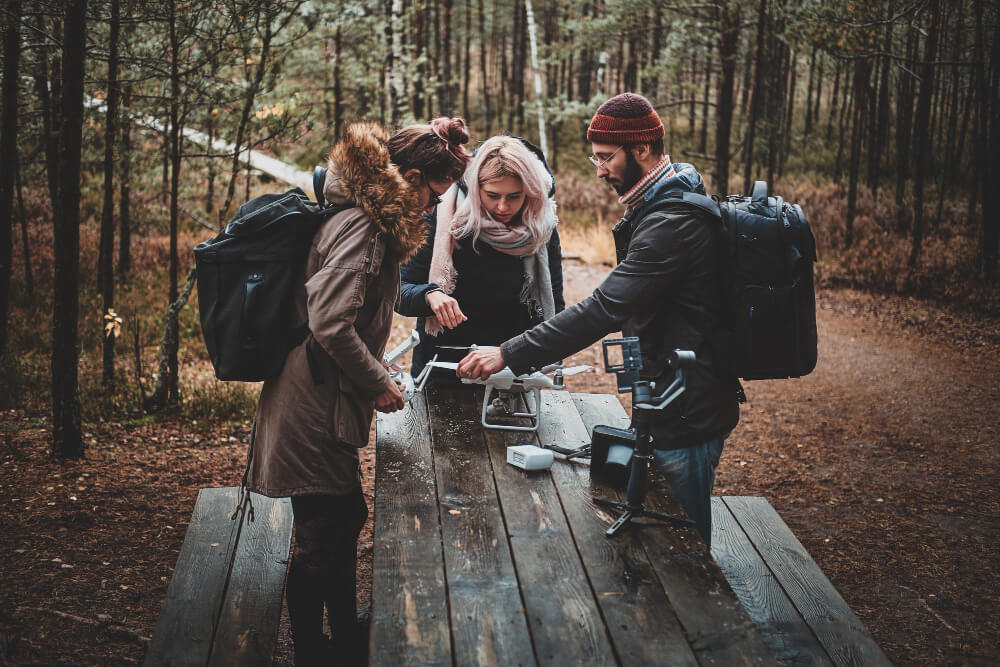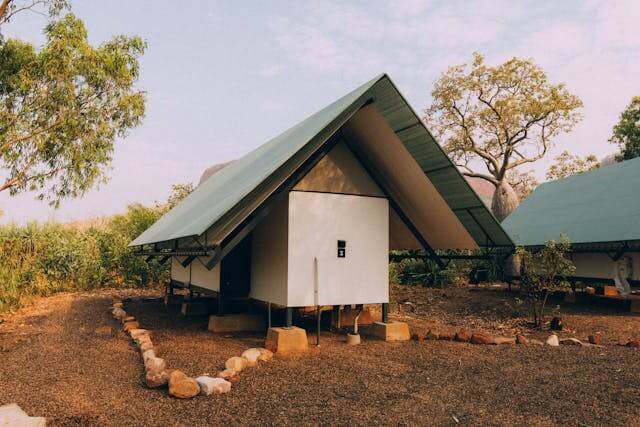Packing Essentials for Your Next Lodge Stay in Nature
When planning a lodge packing guide nature stay in nature, it’s essential to pack smartly to ensure a comfortable and enjoyable experience.
Whether you’re a seasoned outdoor enthusiast or a first-time lodger, having the right gear can make all the difference. Here’s a comprehensive guide to help you pack effectively and make the most of your trip.

Common Questions and Concerns
- What should I pack for a lodge stay?
- How can I be prepared for different weather conditions?
- Are there specific items that are essential for staying in nature?
- How do I balance packing light with being prepared?
Let’s dive into these questions and provide some practical answers and tips.
Clothing: Dress for Comfort and Versatility
lodge packing guide nature the right clothing is crucial for a lodge stay, especially when you’re in the great outdoors where weather conditions can change rapidly.
Layers: Prepare for Any Weather
- Base Layers: Start with moisture-wicking base layers to keep sweat away from your skin. Materials like merino wool or synthetic fabrics are excellent choices.
- Mid Layers: Insulating layers like fleece or down jackets will keep you warm when temperatures drop. A fleece jacket is lightweight and versatile, while a down jacket provides superior warmth.
- Outer Layers: A waterproof and windproof jacket is a must-have to protect you from rain and wind. Look for jackets with breathable fabrics to prevent overheating.
- Bottoms: Pack a mix of hiking pants, leggings, and shorts. Convertible pants that can zip off into shorts are particularly useful.
Personal Story: On a recent trip to the mountains, I underestimated how cold it could get at night. Thankfully, I had packed an extra fleece layer, which made all the difference while stargazing.
Footwear: Comfort and Durability
- Hiking Boots: Invest in a good pair of hiking boots with ankle support and waterproofing. Break them in before your trip to avoid blisters.
- Casual Shoes: Comfortable shoes for lounging around the lodge, like slip-ons or sandals.
- Socks: Pack moisture-wicking socks to keep your feet dry and blister-free. Wool socks are a great option for warmth and comfort.
Accessories: The Little Things Matter
- Hats: A wide-brimmed hat for sun protection and a beanie for cold weather.
- Gloves: Lightweight gloves for cool evenings and thicker gloves if you’re heading to a colder climate.
- Sunglasses: Protect your eyes from the sun’s harmful rays with a good pair of UV-protective sunglasses.
Toiletries: Stay Fresh and Clean
Maintaining hygiene is crucial when you’re out in nature.
Here’s a list of essential toiletries to pack.
Basic Toiletries
- Toothbrush and Toothpaste: Don’t forget the essentials for dental hygiene.
- Deodorant: Choose a long-lasting deodorant to keep fresh throughout your stay.
- Shampoo and Soap: Travel-sized bottles of shampoo and soap or multi-purpose soap that can be used for both body and hair.
- Brush or Comb: Keep your hair tidy with a compact brush or comb.
Extra Items
- Sunscreen: Protect your skin from UV rays, even on cloudy days.
- Insect Repellent: Avoid pesky bug bites with a good insect repellent. DEET-based repellents are effective, but there are also natural alternatives.
- First Aid Kit: A basic first aid kit with band-aids, antiseptic wipes, pain relievers, and any personal medications.
- Hand Sanitizer: Keep your hands clean when water isn’t readily available.
Tip: Keep your toiletries in a waterproof bag to prevent any leaks from damaging your clothes or gear.
Luxury Items
- Quick-Dry Towel: Lightweight and compact, quick-dry towels are perfect for travel.
- Skincare Products: Bring your favorite skincare items to maintain your routine, but opt for travel sizes.
Example: I always bring a small portable charger for my phone. It’s a lifesaver when using GPS on long hikes.
Gadgets and Gear: Be Ready for Adventure
The right gear can make your lodge stay much more enjoyable and stress-free.
Here are some essential items to consider.
Navigation Tools
- Map and Compass: Never rely solely on electronic devices. A map and compass are reliable and don’t require batteries.
- GPS Device: For more precise navigation, a handheld GPS device can be very helpful, especially in remote areas.
Lighting
- Headlamp: A headlamp is invaluable for hands-free lighting. Perfect for nighttime walks or finding your way around the lodge after dark.
- Flashlight: A compact flashlight is a good backup. Ensure you pack extra batteries for both your headlamp and flashlight.
Multi-tool
A multi-tool is a compact and versatile piece of equipment that can assist with various tasks, from opening bottles to fixing gear.
Look for one with essential tools like a knife, scissors, and screwdrivers.
Hydration
- Reusable Water Bottle: A durable water bottle is essential. Consider one with insulation to keep your water cool.
- Hydration Pack: For longer hikes, a hydration pack allows you to carry more water and drink on the go.
Cooking and Food Storage
- Portable Stove: If you plan on cooking, a compact portable stove is handy. Don’t forget the fuel.
- Cookware: Lightweight pots, pans, and utensils designed for camping.
- Food Storage: Airtight containers to store food and keep it safe from wildlife.
Personal Story
I remember a trip where I forgot to pack my multi-tool. We ended up needing it to open a can of food, and we had to get creative with a rock instead.
Lesson learned: never leave without it!

Entertainment and Comfort
While nature itself offers plenty of entertainment, it’s nice to have a few extra comforts.
Books and Journals
- Books: A good book can be a great companion for quiet evenings.
- Journal: Keep a travel journal to document your adventures and thoughts.
Games
- Card Games: Lightweight and easy to pack, card games are perfect for some fun in the evenings.
- Portable Games: Small travel-sized board games or puzzles.
Comfort Items
- Blanket: A cozy blanket for snuggling up in the lodge or sitting around the campfire.
- Pillow: A compact travel pillow for a good night’s sleep.
Example: On one of my trips, I brought along a small portable speaker. It was great to have some background music while cooking dinner or relaxing in the evening.
Packing Smart: Tips and Tricks
Use Packing Cubes
Packing cubes can help you organize your clothing and gear, making it easier to find what you need without unpacking your entire bag.
They also help save space and keep everything neat.
Pack Dual-Purpose Items
Think about items that can serve multiple purposes, like a bandana that can be used as a headband, a towel, or even a makeshift sling.
Multi-purpose gear saves space and weight.
Weather-Proof Your Bag
Line your backpack with a trash bag or use dry bags for your gear to protect against rain or unexpected water exposure.
This extra layer of protection can prevent your essentials from getting soaked.
Roll, Don’t Fold
Rolling your clothes instead of folding them can save space and reduce wrinkles.
This technique works especially well for t-shirts, pants, and even some bulkier items like jackets.
Keeping Content Fresh
Regularly update this guide with new tips, reader suggestions, and the latest gear recommendations.
This ensures the content remains relevant and valuable to your audience. By keeping your content up-to-date, you can also improve your SEO rankings and attract new readers.
Example: I update my packing list after every trip, adding new essentials I discover and removing items I found unnecessary. This continuous improvement ensures I’m always prepared and my readers get the best advice.
Final Thoughts
lodge packing guide nature stay in nature requires careful planning and thoughtful selection of gear and clothing.
By following this guide, you’ll be well-prepared to enjoy your time in the great outdoors.
Remember, the key is to balance comfort with practicality and always be ready for whatever nature throws your way.
Whether you’re hiking through forests, relaxing by a lake, or simply enjoying the peace and quiet of a remote lodge, having the right essentials can make your trip memorable and stress-free.
Happy adventuring!
Frequently Asked Questions
What are the basic essentials I should pack for a lodge packing guide nature?
For a comfortable lodge packing guide nature stay, consider bringing the following basic essentials:
- Toiletries: Toothbrush, toothpaste, shampoo, conditioner, soap, and any personal hygiene items.
- Clothing: Pajamas, a change of clothes suitable for outdoor activities, and an extra layer for cooler temperatures.
- Footwear: Good walking shoes or hiking boots for outdoor terrain.
- Bedding: Check if the lodge provides linens; if not, pack a sleeping bag or pillow.
- Rain Gear: A rain jacket is advisable as weather can change unexpectedly.
Are there specific items I should bring for cooking?
Yes, if your lodge has kitchen facilities or you plan to cook, consider packing:
- Cooking Essentials: A fire-safe frying pan, a knife set, measuring cups, and utensils (spatula, tongs).
- Food Storage: Bring Ziplock bags and containers for leftovers.
- Condiments and Spices: Items like salt, pepper, cooking oil, and any favorite seasonings enhance your meals.
What recreational gear should I consider?
Depending on your interests and the lodge’s location, you might want to bring:
- Outdoor Equipment: A hammock for relaxation, fishing gear if there’s water access, or hiking poles for easier trekking.
- Games and Books: Board games or a good book can provide entertainment during downtime.
- Camera: Capture the beautiful scenery and moments during your stay.
How can I ensure I have everything I need without overpacking?
To avoid overpacking:
- Make a Checklist: Use a packing list tailored to your activities and the amenities provided by the lodge.
- Pack Versatile Clothing: Choose clothing that can be layered and mixed to create different outfits.
- Limit Non-Essentials: Focus on items that serve multiple purposes to save space in your luggage.
What should I know about packing for different seasons?
Seasonal considerations can significantly impact what you pack:
- Summer: Bring lightweight clothing, sunscreen, bug spray, and swimwear if there’s water access.
- Fall/Winter: Pack thermal layers, snow gear (if applicable), and extra blankets for warmth.
- Spring: Prepare for rain with waterproof jackets and boots. Always check the weather forecast before your trip to adjust your packing accordingly.